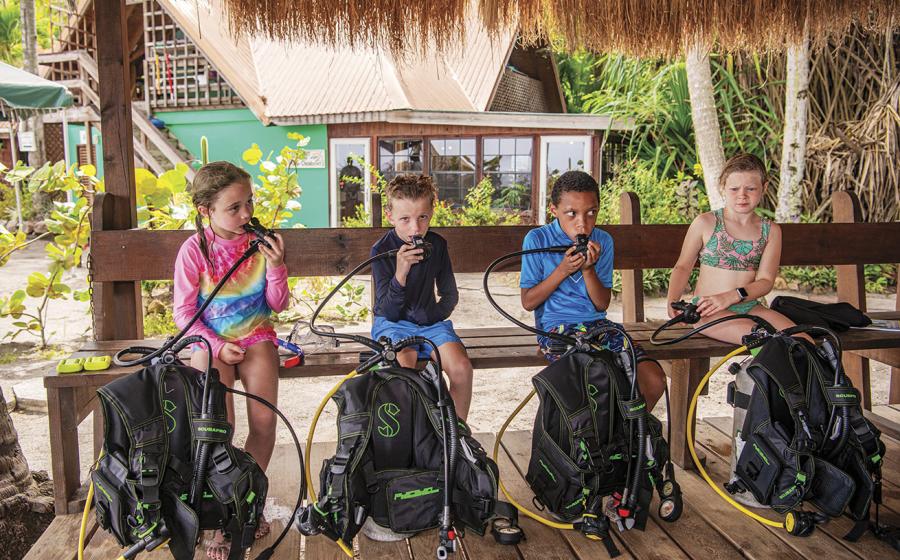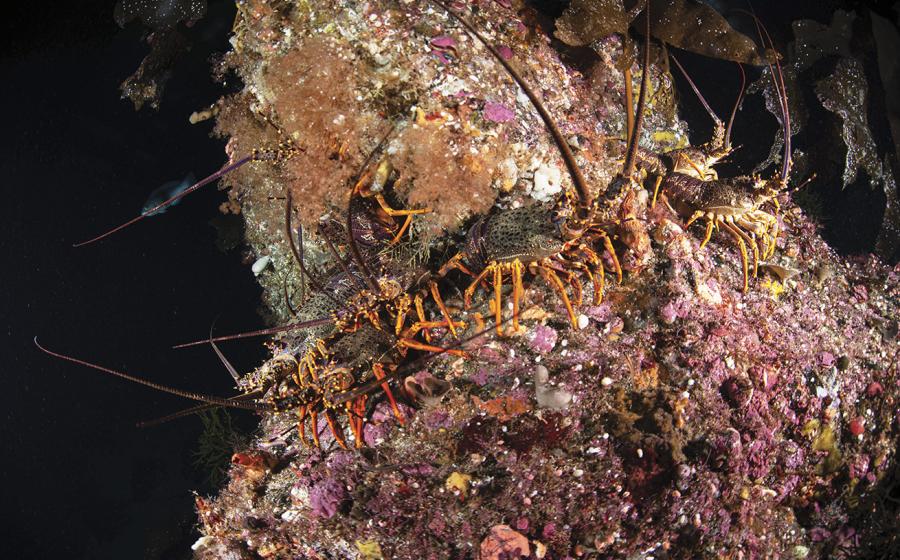Blue Project Q&A with Hugh Miller

The Blue Project uses sport, adventure and digital media to connect more people to our blue environment. Jacques Cousteau once said that “People protect what they love,” so our mission is to develop innovative ways to encourage greater care of our blue environment.
Our journey started with a small group of people who derive a large part of their inspiration from competing and working in the natural environment. We decided to share their stories, images and content with a wider audience and set up the Blue Project as a communications outreach programme.
In 2009, we launched the Blue Mile as a mass-participation event designed to connect more people and raise funds to support WWF’s marine and freshwater program – www.theblueproject.org.
Recently, we talked with underwater wildlife cameraman and photographer Hugh Miller, who recently filmed for the BBC Frozen Planet series. Miller is from Plymouth, Devon, UK.
Q: How and when did your career as a natural environment photographer and videographer begin?
A: I guess it has always been an interest. Wildlife films and documentaries, particularly the underwater ones, fascinated me as a child. Actually doing it for myself seemed pretty unattainable — you can do a lot without much equipment, but you still need some. I devoured books about wildlife and filmmakers instead. I read marine ecology at university and studied for a master’s in marine biology (I had actually applied to do a post-grad in wildlife filmmaking and got turned down!) This was fortunate in hindsight, as I managed to land a job for minimum wage at the local aquarium. I was particularly awful at this job, as I was constantly doing things that were not in my job description — such as time-lapsing seafans in a flow tank for a scientist’s project. In the end, instead of firing me, they asked me to make some short films about the work done at the aquarium that was played on various screens throughout the building.
One day the curator, who had been a cameraman for Cousteau, said a colleague of his needed a researcher for a few weeks at the BBC’s Natural History Unit. That really was the start. The program in question was Planet Earth and, frankly, I worked my backside off. I got extensions to my contract, and three weeks became three months, and I eventually stayed for a year. I was then offered a three-year contract as a researcher on Life. I turned it down. I knew I wanted to be behind the camera and if I stayed that would not have happened. So I left with no job, having turned down three years of work. I was mildly terrified and questioned my own sanity; I’d left the National History Unit! In my initial naivety, I hadn’t realized that all crew, which include camera operators, are freelance, even if they work primarily for the NHU. Slowly, I picked up assisting work and worked beside the very best camera operators on the planet, learning all the time. I worked as an assistant for five years before starting to shoot my own sequences.

Q: What is your motivation when specializing in images that depict the natural environment?
A: Several things motivate me. Initially, it encompassed the desire to document something that’s not often seen or that might not be seen again. This desire led to the satisfaction of building specialist pieces of equipment that allowed a particular event or piece of behaviour to be captured on screen. An enormously gratifying, if difficult and demanding process.
The artistic side took more time to develop, that was the sense of creating an image that has its own intrinsic artistic value no matter what the subject. That has been something I had to cultivate and encourage within myself. I was sitting with a scientist in a canteen on an Antarctic base when a science technician joined us. The two of them started talking about a particular project before the technician turned and apologised to me for talking about science that I wouldn’t understand, me being an artist! I spluttered something about having two degrees in science, but then it hit me, maybe I’m supposed to be an artist now!
Actually, a primary goal of mine is to communicate science. I think that’s a very useful thing to do. Most science just sits on shelves to be possibly read by the occasional fellow scientist. I think to visualise some of that work is important for the future of science, it motivates people to look at it, and it promotes a wider popular understanding. It’s important for science to be a cultural thing. Also it just plain inspires people. I grew up landlocked, miles from the sea, but through old films and books I fell in love with what lived below the surface of those far-flung mysterious seas.
Q: Do you participate in sport in the natural environment and if so, what is your favorite sporting activity and why?
A: Well, I tried my hand at all sorts of things when I had the opportunity. Sailing and surfing became dominant in my life at different times. All of that pretty much stopped when I took up diving. There are so many different aspects to scuba diving, each has its own discipline and each takes time to learn and master. From freediving and blue water work with very small cylinders to much more involved technical diving with computer-controlled rebreathers, overhead environments and so on. It’s quite wonderful as you may be an absolute master in one and a beginner in another. I’m still not sure if scuba is a sport. It’s an activity, a pastime, a hobby, a job, an obsession, but you can’t win anything and you don’t compete, so I’m not sure it’s a sport. If it is, it is definitely my favorite!

Q: How does your imagery connect you personally with the natural environment?
A: It connects me directly, as it binds me emotionally to a place, the image is a memory. Not just of the subject but also of the environment, the expedition it surrounds and the people involved. It’s hard to look at an image and be emotionally detached, without feeling those things. That’s why you need a good editor!
Q: What reaction do you want to receive from the audience who view your imagery?
A: I think a mixture of surprise, even incredulity, and enthusiasm for what might just be a wriggly, squidgy thing on the sea floor. If I come close to any of those then that’s good! The reaction depends on what you’re trying to tell in the film, so I guess if it’s what you hoped for, then you have to be more than happy with that. I think imparting a sense of wonder is something that I really hope to do.

Q: During your photographic career have your observations of the natural environment changed and if so, in what way?
A: Well, I don’t often get the chance to go back to the same area, but that is of course something I hope to do as time goes by. I do worry that there will be nothing to film soon except jellyfish and I don’t think you can make a career out of that. When I was researching for Planet Earth, I was looking for a seamount we could film around. I suggested a location off Mexico that had been filmed for Blue Planet, only to find that in the intervening years, long-line fishermen had targeted this area and stripped them of the wildlife that had lived there. There was literally no point in going to this spot any more. This is a tragedy and it's happening again and again. It’s a terrible loss to a countries economy too. Those sites had been prime targets for adventurous tourists. Year after year, bringing in money. I talk to older people in this profession and it’s really something they talk about and have borne witness too. Shifting baselines of perception with each new generation is a concern. It’s important to look at old records, whether it's film or by book. and shift your own baseline back a bit. What we have today is not acceptable, though there are success stories, which should be all the encouragement we need as scientists, sport lovers, artists, and fishermen to improve the environment we live and work in.
Q: If you were to use one specific image to inspire people globally, to want to care for the natural environment, what type of image/scene would you use?
A: If I could answer that then I could have saved the world and then gone onto earn a fortune in an advertising bureau! I think it’s very difficult to use one single image globally as people’s tastes and value’s of a subject change as you move around the globe. I think that’s important to understand when approaching global issues. It’s a cliché, but "think globally and act locally" really does have a lot of truth in it.
If I really had to pick one picture it would be "Earth Rising," taken by one of the early Apollo missions. It is of the Earth looking very small and blue in the enormity of space and the empty lunar surface dominant in the foreground. I think that is something that really can make people stop and stare and realise that this seemingly endless planet is very small and finite.

Q: What advice would you give to people who want to change their day to day behaviour to help protect our natural environment?
A: Reduce, reuse, recycle is a basic, with recycle being very much the last option. Go into your bathroom and look through all your soaps and scrubbing lotions. If they contain polyethylene, which is used to exfoliate and scrub in anything from industrial hand cleaners to the smartest facial cleansers, then please put it in the bin and not down the sink! Micro-plastic pollution is one of the top threats to the ocean environment and yet very little has been said about it in popular media. There is a film being made called Plastic Oceans, which I hope will spread the word. Question where the fish you are eating has come from. Look at the good fish guide and become choosy.
Q: What advice would you give to youngsters aspiring to making a living from natural environment photography?
A: Well, it’s not an easy industry to make a living in. I don’t mean that to discourage but as a point of fact. There is very little structure to it and it can be very fluid. You need to love the subject and gain a large breadth of experience in different environments but also it pays to be really good in one. I’m always a bit suspicious of people who claim they are brilliant at rock climbing, diving, flying, hiking, tree climbing, and caving. I just think, really? Just how many lifetimes did that take? By all means get experience in all of them or whichever takes your fancy, but spend the time you have excelling at just one or two. Don’t worry if you don’t have any photographic equipment when you’re young. Get familiar with the environment whether it’s through mountain biking or surfing; add the cameras when you can afford it. Some great photographers and cinematographers have come out of film schools and some have not, so if that’s not an option don’t worry about it! Most wildlife camera operators didn’t take formal training in photography and many if not most have biology and zoology backgrounds. That’s not to say training doesn’t help. The bar is ever higher so it certainly can speed the process up. If you have a passion, you can learn.
For more information about The Blue Climate and Oceans Project and Hugh Miller, please contact: Teresa Page, [email protected]






